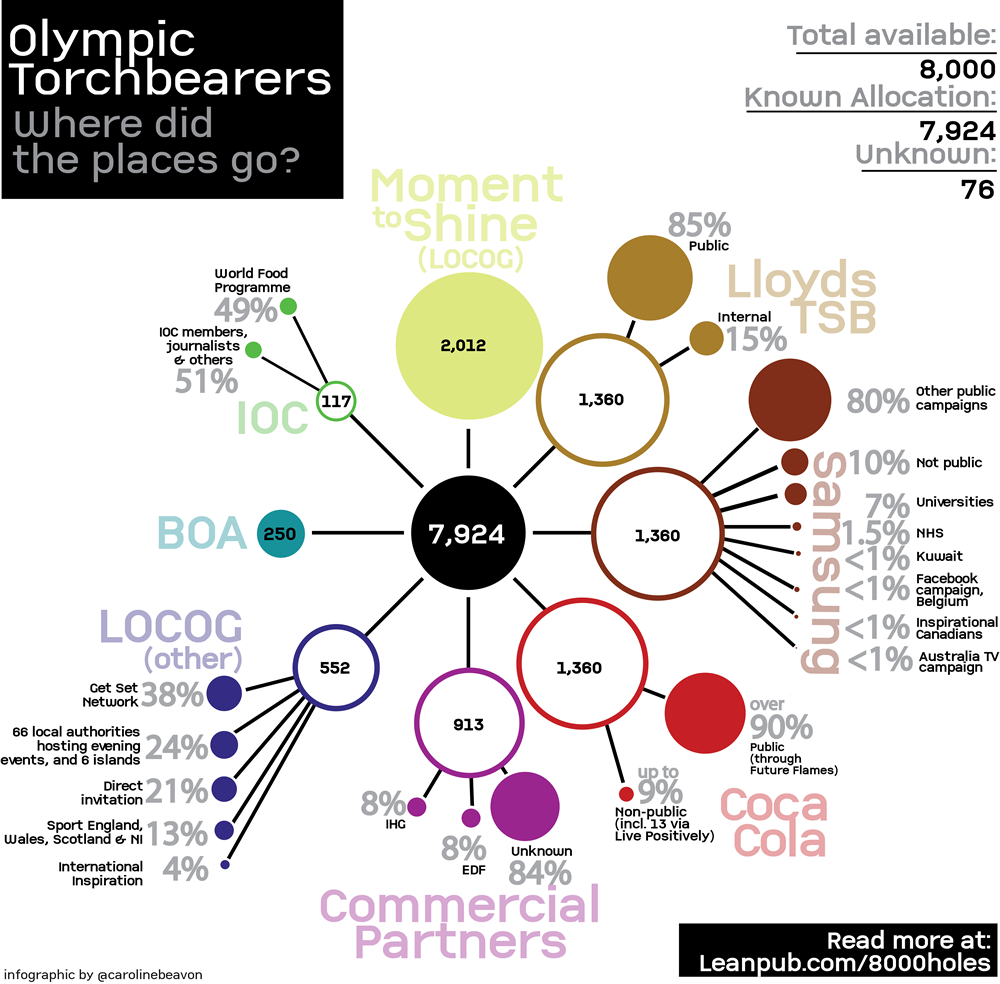An allocation of how the 8,000 Olympic torchbearer places were allocated has found that just 71% were allocated through the four main public campaigns.
The figure – published in the ebook 8,000 Holes – casts doubt on the promise by organisers LOCOG that 90% of places would be made available to the general public.
Three smaller campaigns conducted by LOCOG through 72 local authorities and islands hosting the relay, schools in the Get Set Network, and 20 countries in the International Inspiration programme, take the figure up to 75%.
The three presenting partners admit that a significant proportion of their allocation was not awarded publicly. This was largest for Lloyds TSB, who gave 15% of their 1,360 places to staff. Coca Cola say the proportion of places available to the public was “over 90%”, and Samsung say “Approximately 90%” of the places were selected from the public. This contradicts earlier statements from LOCOG which said “Samsung is providing 1,360 Torchbearers … through its worldwide public nomination campaign.”
Early in the organisation of the torch relay, it was said that 90% of places would be made “available to the general public“, or as Reuters reported “people nominated through public campaigns run by LOCOG and sponsor partners”.
In total just under 2,000 places were allocated through internal channels outside the public campaigns, including the three main sponsors, commercial partners, national sport bodies, the British Olympic Association, LOCOG and the IOC.
A spokesperson for LOCOG suggested that the places “available to the general public” included these. They said:
“We are wholly confident in the 90% of places have gone to members of the public. The four large public nomination campaigns were one mechanic to find great Torchbearers. Our core stakeholders have also put forward nominated members of the public found through customer programmes and other nomination mechanics to find people with strong personal best stories. The remaining 10% of people have been invited to run and include domestic and international athletes, high profile role models and a handful of great representatives that came to light outside of the main programmes that were run last year.”
However, they cannot provide details of which members of the general public had been nominated, or whether any processes existed to ensure that the 90% claim could be met.
The British Olympic Association (BOA) is explicit in an internal document that its 250 places were not part of the 90% of places available to the general public, while a spokesperson for adidas stated that:
“We are not able to give our places away to consumers. You would need to talk to LOCOG about how they allocate torch places to sponsors and the parameters of what we are allowed to do.”
The full data for torchbearer allocations is available here.




Pingback: A case study in online journalism part 3: ebooks (investigating the Olympic torch relay) | Online Journalism Blog
Pingback: A case study in online journalism part 3: ebooks (investigating the Olympic torch relay) | Online Journalism Blog